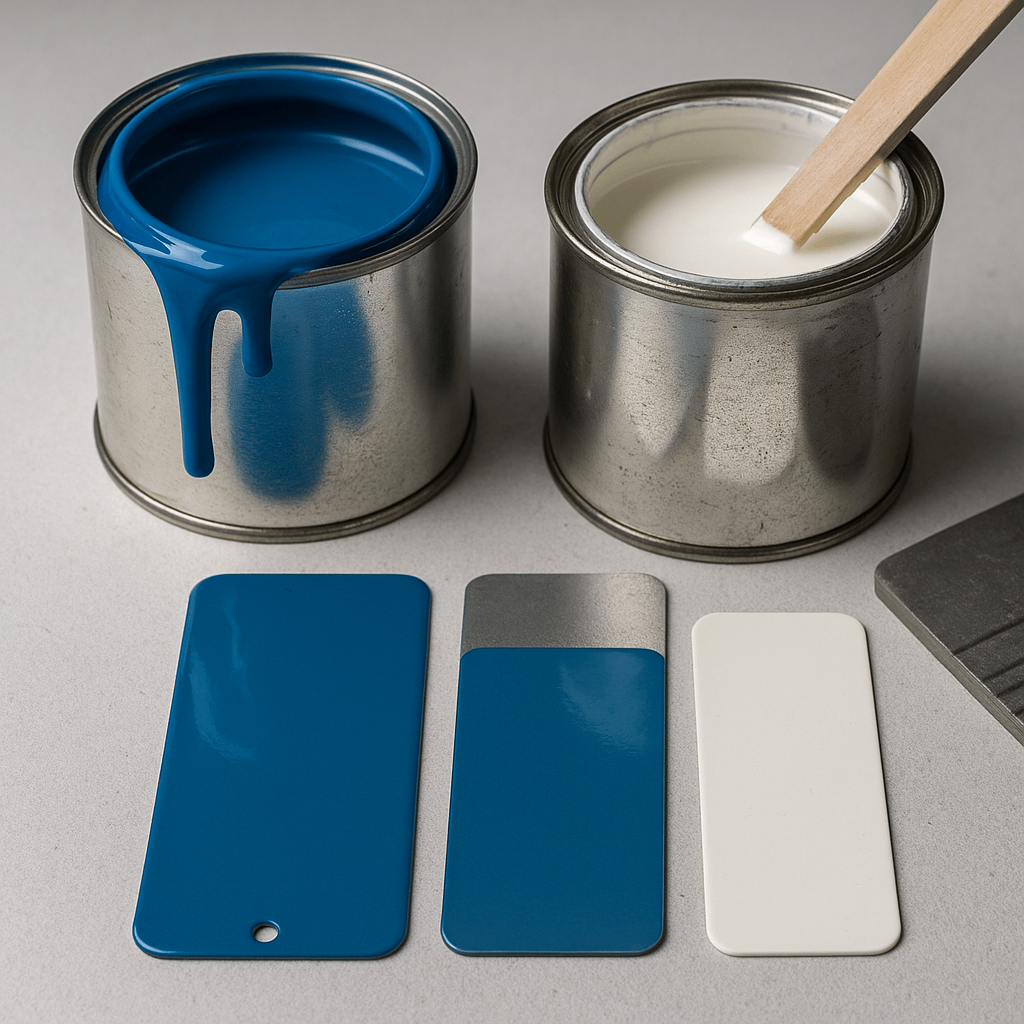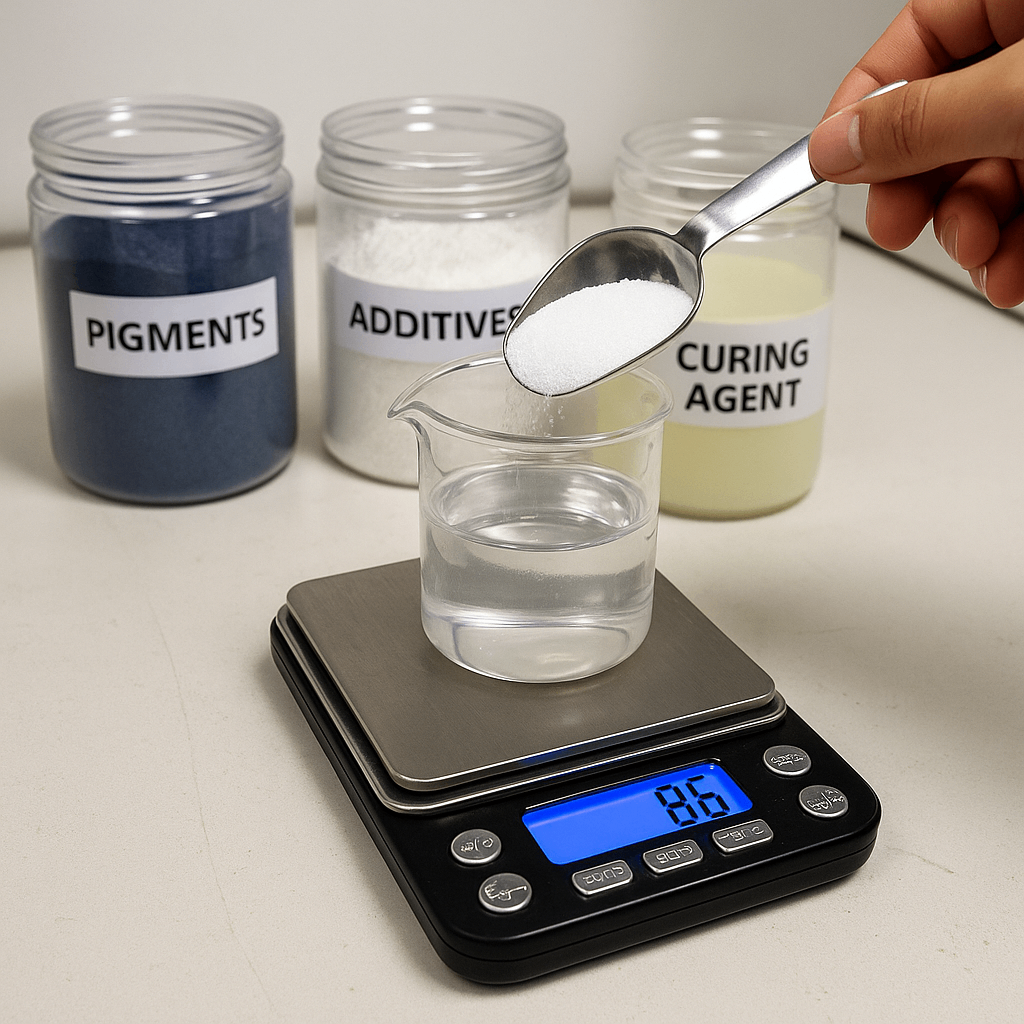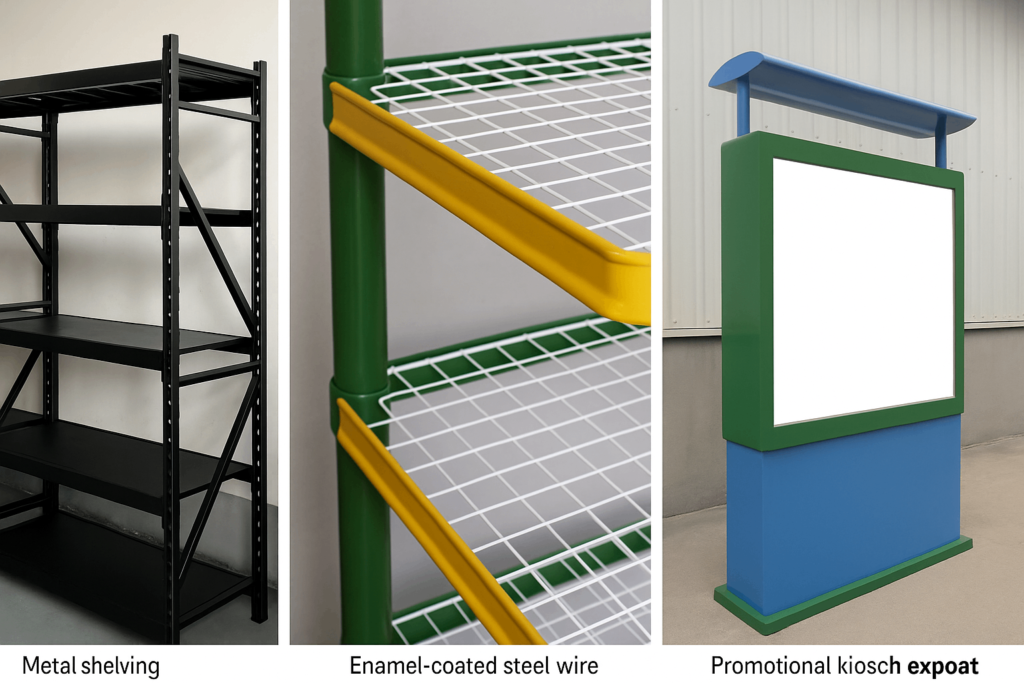Why Enamel Paint Still Matters for Metal Product Buyers
Buyer’s Perspective: For global sourcing professionals working with metal enclosures, displays, kiosks, or vending systems, selecting the right industrial coating can make or break a project. Enamel paint remains a highly practical option in bulk production thanks to its durability, rework flexibility, and international compliance.
Whether for export-grade mild steel cabinets or signage exposed to the elements, understanding enamel paint from a procurement perspective helps ensure performance, regulatory alignment, and logistics readiness.
This guide walks you through how to assess, specify, and apply enamel paints efficiently in your supply chain.
What Is Enamel Paint and Why It Matters in Bulk Metal Coating Projects
Enamel paint is a resin-based protective coating that cures into a hard, glossy, and weather-resistant film. It is widely used across industrial and structural metal applications.
Two major categories:
Solvent-based alkyd enamel: Durable with a high-gloss finish but emits moderate VOCs.
Water-based enamel (acrylic/urethane): Export-friendly, low-odor, REACH-compliant.
Common procurement use cases:
Steel vending housings and kiosks
Reworkable powder-coated racks
Outdoor-use mild steel hardware
Painted signage or steel shelving for logistics-ready deployment
What Is Enamel Paint Made Of? Technical Composition and Standards
Buyer’s Tip: Always require full TDS and SDS documentation before confirming an order.
Typical enamel formulations include:
Binders (alkyd or acrylic resins): Control adhesion and durability
Pigments: Deliver color, coverage, and corrosion protection
Solvents or water: Impact drying speed and sprayability
Additives: Enhance flow, gloss, and resistance properties
Standardized test metrics:
Adhesion: ASTM D3359 (4B–5B)
Gloss: ASTM D523 (>85 GU at 60°)
Salt spray: ASTM B117 (>250 hours)
Hardness: ASTM D3363 (2H–3H)
Use these figures during pre-qualification or factory audits.
When to Specify Enamel Paint (and When You Shouldn’t)
Application Warning: Match enamel use to operating conditions and base material.
Ideal for:
Exterior enclosures needing scratch-resistant gloss
Large-volume metal parts that require in-transit repairability
Economical runs where powder coating is overkill
Avoid when:
You need high flexibility or extreme UV resistance
Using untreated aluminum or galvanized steel (unless primed)
The product is for harsh marine or chemical exposure
Quick Match Matrix: Best Enamel Coating Uses for Metal Buyers
| Application | Enamel Paint Fit | Notes |
|---|---|---|
| Outdoor kiosks and cabinets | ✅ Yes | Use phosphate-treated steel and PU enamel |
| Aluminum profile frames for signage | ⚠ Partial | Must use etching primer underneath |
| Food-grade equipment frames | ❌ No | Epoxy or FDA-compliant PU recommended |
| Display racks for shipping | ✅ Yes | Allows for low-cost touch-up during transit |
Use this matrix to quickly align your part specs with coating options.
Enamel vs Epoxy vs Powder Coating: What Industrial Buyers Should Know
| Feature | Enamel Paint | Epoxy Paint | Powder Coating |
| VOC Compliance | Moderate–Low | Medium | Very Low |
| Substrate Flexibility | Low | Medium | Low |
| Touch-Up Feasibility | ✅ Easy | ⚠ Limited | ❌ Not feasible |
| Application Process | Brush/Spray | Spray | Electrostatic |
| Finish Repair Cost | Low | Moderate | High (requires oven) |
Use this table during feasibility reviews for coating methods.
Evaluating & Controlling Enamel Coating Quality
Buyer’s Tip: Always request a sample part finished on your actual substrate.
Before confirming bulk production:
Ensure your supplier’s TDS uses ASTM/ISO benchmarks
Ask for factory sample panel test reports (adhesion, gloss, corrosion)
Conduct basic field simulations (scratch, tape, drop)
During application:
Verify surface prep steps (e.g., degreasing, phosphating)
Monitor cure environment (humidity, airflow, oven time)
Require coating logs with batch-level traceability (TDS + SDS)
Why this matters: Most enamel failures arise not from poor paint—but from improper pretreatment or curing.
Eco Compliance in Enamel Systems for Export Buyers
Global markets demand increasing environmental accountability:
VOC limits (e.g., CARB <100 g/L, EU <130 g/L)
Toxicant bans: lead-free, chrome-free, no halogenated solvents
Reusable packaging & chemical registration
🛡️ Tip: When exporting to strict regions like California or Germany, explicitly request low-VOC enamel for export.
FAQ: Enamel Paint for International Procurement
Q1: Can enamel be applied directly to aluminum or galvanized steel?
Not reliably. Always apply an etching primer first to avoid peeling or adhesion loss.
Q2: Does high gloss equal higher durability?
No. Gloss is aesthetic. Corrosion resistance depends more on primer, film thickness, and resin type.
Q3: What tests should I ask for?
At minimum: ASTM D3359 (adhesion), D523 (gloss), B117 (salt spray), D3363 (pencil hardness).
Q4: Can enamel resist salt air or humidity?
Partially. If corrosion risk is high (e.g., coastal installs), opt for epoxy or PU + primer layers.
Q5: Enamel vs epoxy for mild steel components?
Epoxy offers stronger chemical protection. But enamel allows faster rework and logistics flexibility.
Q6: Is enamel suitable for RFQ specs in the EU or US?
Yes, with REACH- or CARB-compliant formulas. Always attach TDS with VOC data.
Should You Use Enamel for Your Next Batch?
Enamel paint remains a smart, versatile option for many industrial metal products—especially for buyers needing reliable performance, export compliance, and in-transit repair flexibility.
When specified correctly and matched with the right primer + process control, it reduces failure risk and supports large-batch production.
YISHANG offers technical advisory and coating validation support for global buyers. Reach out to check compatibility or request a pre-tested spec sheet for your product category.




